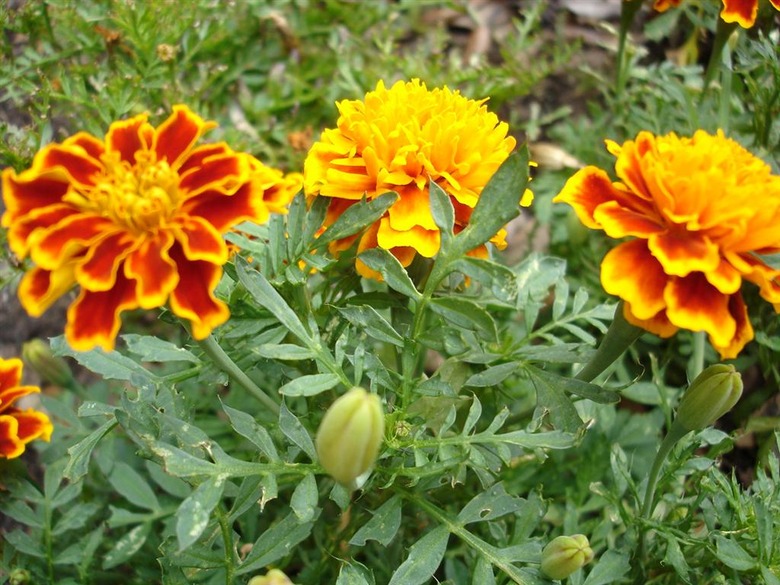How To Design A Half-Circle Garden
Half-circle gardens add a tailored look to the landscape while still offering the perception of a freely shaped garden. They can be used beside a home, in the center of a lawn or around a lamppost or mailbox. Half-circle gardens require careful consideration of height as well as color to create a feeling of balance.
Step 1
Examine the area for your half-circle garden to determine the amount of available light. Assessing the amount of sunlight will allow you to choose appropriate plants. Partial shade/partial sun plants require four to six hours of sunlight each day. Full-shade plants can handle one to two hours or dappled sunlight broken up by a tree canopy.
- Half-circle gardens add a tailored look to the landscape while still offering the perception of a freely shaped garden.
- Half-circle gardens require careful consideration of height as well as color to create a feeling of balance.
Step 2
Consider some basic principles of landscape design, including symmetry of the garden. Symmetry involves balancing plants of equal height, style and type on each side of the garden.
Step 3
Select a few basic colors for the garden. Choose two to three colors of plants and repeat these colors throughout the garden to create a sense of design unity. Also consider choosing plants similar to those in the other gardens in your yard. Repetition of types and colors of plants helps tie the landscape together.
Step 4
Line the back row of the half-circle garden with your tallest plant selections, adding progressively smaller plants as you work from back to front. Consider choosing a perennial such as Shasta daisies or Alberta spruces as the anchor plants on the back row.
- Consider some basic principles of landscape design, including symmetry of the garden.
- Symmetry involves balancing plants of equal height, style and type on each side of the garden.
Step 5
Select interior plants of medium height that flatter the back row and blend with the smaller plants in the front. Medium-height plants include astilbe, coreopsis or chrysanthemums. These plants will grow outward to fill in any gaps in the garden.
Step 6
Choose low-growing plants for the front two rows of the garden. Low-growing plants don't reach above 10 inches at full maturity. Low growers include blue fescue ornamental grass and annuals such as petunias, dianthus and marigolds.
Step 7
Choose edging plants along the border of the garden. These plants grow as ground cover and include alyssum and silver mound artemisia.
- Select interior plants of medium height that flatter the back row and blend with the smaller plants in the front.
- These plants will grow outward to fill in any gaps in the garden.
Step 8
Consider adding a groomed touch by edging the half-circle garden with a stone or brick border that blends with the exterior color scheme of the home.
